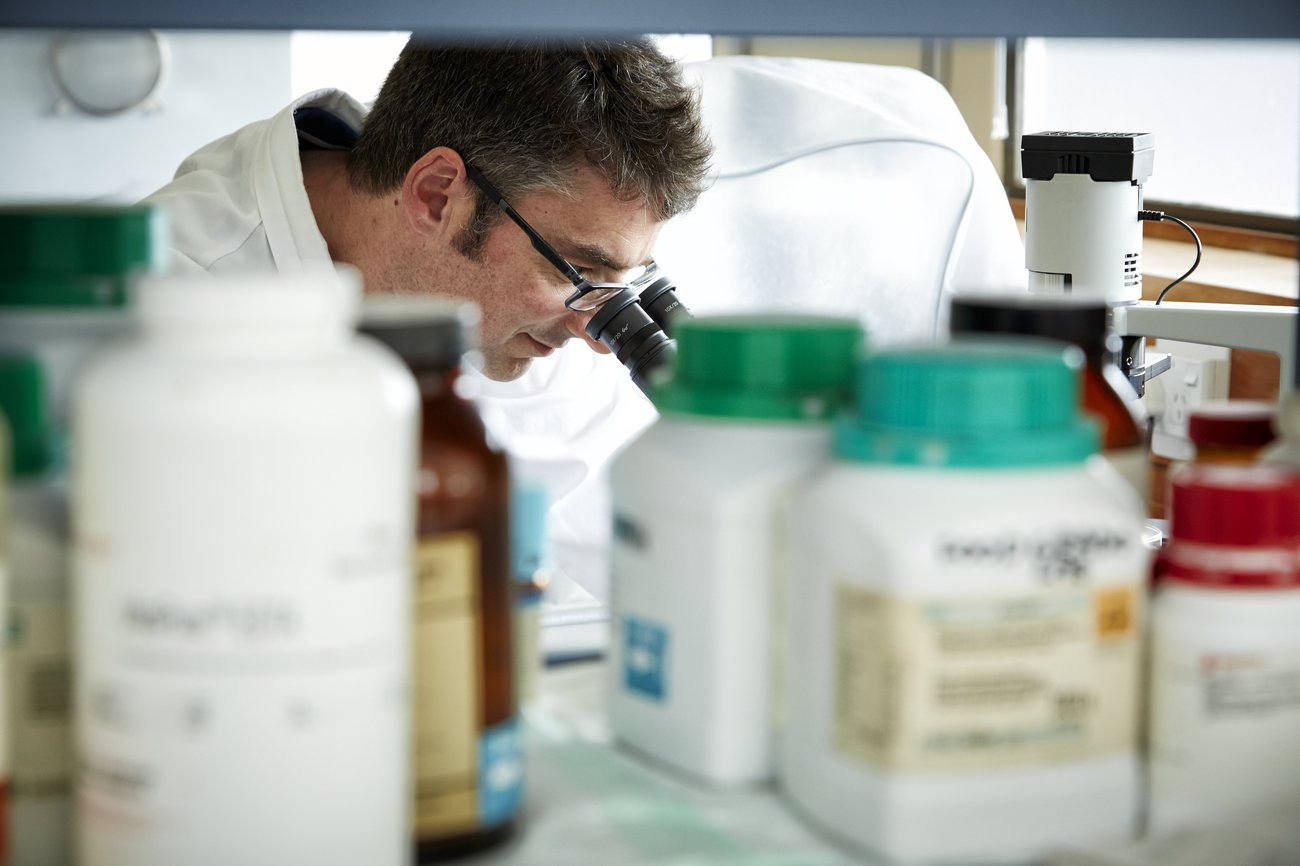
Insects often get a bad rap. Not in Andrew Kralicek’s lab. Kralicek, team leader of the Molecular Sensing team at Plant & Food Research, has spent the last nine years working out how to harness insects’ amazing powers of smell – the uncanny sense that takes a bee to a faraway flower or a mosquito unerringly to the nearest ankle – to make sensors with the potential to detect, for example, explosives, pollution, disease, or drugs.
It’s the practical element of the research that excites Kralicek – the fact that his science is ultimately going to improve people lives.
“No one has ever used an odorant receptor from any animal to create a sensor. And there’s a real need for it. For example, the volatile compounds emitted by humans can tell us about their health – or lack of it. It’s like a language, and if we can find a way of interpreting that language, it’s a very powerful tool.”

Kralicek, a molecular biologist by training, spent the early part of his career in Australia and Spain studying proteins involved in cell division and replication of DNA. Having gained eleven years of experience overseas he felt ready to come back to New Zealand. And as he was looking around for opportunities, he came across the then new research into insect olfactory receptors.
“No one was doing this before. Smell is really the last sense which we haven’t conquered in terms of an easily-used technology. Cameras, microphones, motion sensors, baby monitors, touch screens on smartphones; all these things commercialise one of the other senses. Not smell.”

Actually, the idea of using insects’ powerful sense of smell isn’t new. Back in 2013, London’s Heathrow Airport ran a trial using live sniffer bees to search luggage and cargo. The “bomble bees” were successfully trained to detect traces of various explosives, but in the end training and strapping bees into a sensor device was too unwieldy.
Andrew Kralicek’s answer is not to use the bees themselves, but to identify the different odorant receptor proteins that allow insects’ brains to recognise the thousands of different smells they come across. These receptors are expressed in neurons found in the insects antennae. Each receptor will pick up a small range of different odours and they all work together to build a picture in the insect’s brain of whether the scent is coming from, for example, a flower, an ankle, or an attractive member of the opposite sex.

Once different odorant receptors have been identified, Kralicek’s team wants to harness these receptors in a man-made sensing device. “The technology will basically be a very powerful electronic nose, with the potential to detect extremely low levels of target volatile compounds such as hazardous pollutants. We know insects can be trained to smell parts per trillion levels of volatile compounds,” Kralicek says.
Helping fund this goal is a $20,000 award from the Kiwi Innovation Network (KiwiNet)’s Emerging Innovator Fund, an award available to early-career scientists with a clever idea and a willingness to work closely with business to take it to market. Kralicek is KiwiNet’s inaugural Emerging Innovator recipient, and the funding will allow him to work alongside Auckland-based air quality monitoring equipment company Aeroqual to develop the prototype sensor. Aeroqual already makes equipment to monitor anything from roadside emissions, to industrial plants, to mine dust, but Kralicek believes his insect biosensor technology will be cheaper, easier to use, and more sensitive.

“Nature is still orders of magnitude ahead of the most advanced man-made noses currently produced. The technology which is available (gas chromotography, spectrometry and others) is not easy to make mobile, and is very expensive. Moreover, you need experts to work with the equipment and that can cost a lot and take lot of effort to set up.
“But we know we have competition and we suspect others are working on similar ideas, so we are fighting against time.”
Kralicek says the $20,000 funding will pay a researcher to help develop his concept further. Once a prototype has been developed, the sensor can be marketed for other applications and potential investors, he says.

“This award highlights in the public domain the work we are doing, and gives us extra momentum, getting us over a crucial hurdle between research and commercialisation. It’s exciting to have a company interested in this right now. But once the first cab is off the rank, we can set off in lots of directions.”
Down the track, Kralicek says the insect receptor sensors could be used by border security teams to pick up explosives, drugs or biological threats, or by consumers to decide if food is safe to eat.
The Kiwi Innovation Network (KiwiNet) is made up of universities, Crown Research Institutes and other agencies working together to increase the scale and impact of scientific and technology-based innovation in New Zealand. KiwiNet’s role is to provide the tools, connections, investment and support that researchers need to commercialise their work. The inaugural Emerging Innovator Fund award is sponsored by Callaghan Innovation.




